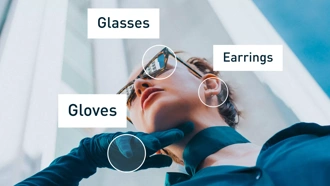Basically, you’re going to go in a room with your colleagues and hash this DAM taxonomy thing out. It’s as logical as sorting legos into shapes, sizes, and colors, but you’re doing it with your business terminology. Your “legos” are photographs, documents, videos, design files, notes, and more. And instead of a small 700+ piece bucket, your bucket selection is probably in the region of 5 million lego pieces.
In digital asset management, building out a taxonomy is often one of the first steps to creating your digital repository. What terms and categories will you use to describe your digital asset collection? How will you decide what to name these terms and categories? These are difficult questions that may leave you feeling paralyzed as what to do next—especially if you’re starting completely from scratch.
A good taxonomy will serve as the foundation for findability in your digital repository. Without it, you would just have a simple storage bucket for your content but no means to easily find your files.
What does a card sorting exercise entail?
In short, card sorting is a research technique for discovering how people understand and categorize information. You can use a card sorting exercise to start brainstorming terms and categories for your digital files. Then you can begin putting similar "cards" together and grouping them. Usability.gov has a very helpful guide for how to use card sorting, but it’s specific to website design/webpage taxonomy.
DAM taxonomy is a little different because we're talking about describing a collection of images, videos, documents and other content that may or may not be publicly facing. These digital assets may have a wide variety of important metadata around them that needs to be captured not only in the taxonomy but in the metadata schema design.
In a card sorting exercise for DAM taxonomy, you have to consider metadata schema design as well as taxonomy design —especially for DAM systems that utilize faceted taxonomy. Heather Hedden writes that the "faceted type of taxonomy in particular that unites the tasks of taxonomy creation and metadata design." Here are seven steps to build out a DAM taxonomy with a card sorting exercise:
1. Identify participants
You want the best, brightest and most representative sample of people in your organization for this exercise. You may need to hold multiple sessions, and you will have to build a business case for why they should attend your meeting.
2. Determine the card sorting method
Will you do a closed session where high-level categories are already predetermined to help guide the exercise? Or will you have an open session by leaving all cards blank and letting participants build the taxonomy from scratch? Consider that open session puts no restraints on your exercise and that a closed session may not be representative of all the digital assets that will be found with the taxonomy.
3. Determine your tool
Will you go old school and use paper and pencil? Or will you organize a digital card sorting exercise with a tool like Trello? Here are some ideas:
- Index cards and pens
- A Trello board—open a free account and invite participants to contribute
- Colored post-it notes (different colors for different categories)
- Cut 8x10 printer paper or card stock down into 2 4x5s, use different colored markers for different categories
- Buy blank card decks & black sharpies
Tips:
- You can use golden star stickers to denote highly sensitive categories of information
- You can use round red, yellow, and green stickers to denote levels of sensitivity for particular categories (red=restricted, yellow=slightly restricted, green=publicly available category)
- You can use these types of stickers to identify groups of cards (e.g. everything with a golden star belongs in the marketing collateral category)
- You can use a special mark on a card to denote if the term has semantic problems (i.e. it is called different things by different departments/teams) or to identify categories or terms that appear to be duplicates (i.e. a term called "manager" and a term called "supervisor")
4. Hold the session
Set ground rules for the group. Encourage discussion about the names of terms. When a dispute happens, solve for the main case, not the edge case (meaning, get the “big buckets” not the individual bucket that might only describe 2-3 files.) Set a start date and time, end date and time if needed, and instruct participants how the card sorting exercise will take place, how much time they have, and encourage discussion among the participants during the exercise. Remember, you are a moderator, but if you have business-specific insight you can also help in this exercise.
5. Review the results
Determine how fluid the results of the card sorting session will be. Will there be additional rounds of feedback? How will you document your findings? In a spreadsheet? With pictures? With a taxonomy tool? Will you record the session for participants who can’t be there? Will you provide a call in and screen share/video chat for participants that can’t be there? How will you inform others in your organization of this exercise, why they were or were not included and what will happen after the exercise?
6. Finalize your findings
Share your results with your team members. Thank them for their participation and let them know that they can reach back out to you for further ideas or discussions in the future. Provide links to the documentation of this card sorting exercise and make sure that they are easily accessible to the organization in the event you or someone on your team leaves the company.
7. Determine next steps
Now that you've gathered the relevant categories and terms into groups that will help describe the digital assets in your DAM system, what are your next steps? For some organizations, it means that you will now input the taxonomy and metadata schema into the DAM tool for testing. A thorough test of the efficacy of the taxonomy can be described as UAT, or “user acceptance testing.” It will look for breakdowns in the taxonomy and for places it doesn’t work, or for places where certain categories or terms seem to be missing. It could measure:
- Known item searches for your search box
Can users find specific digital assets easily with the search box? - Known item search for your facets (filters)
Can users find specific digital assets using filters? How many clicks? - Unknown item searches through the search box and facets/filters
Can users easily browse through filters and find relevant or interesting digital assets? Do the filters “make sense"? - Uploader taxonomy
Can the users upload digital assets and apply metadata easily? Are there terms or categories missing from the upload experience?
Card sorting is not the only way to start building a taxonomy for digital asset management, but it’s an effective one that you can do from anywhere with a wide range of materials—digital or physical. Card sorting also allows you to involve a wide range of participants who may be unfamiliar with, or hesitant about being involved in taxonomy design.












